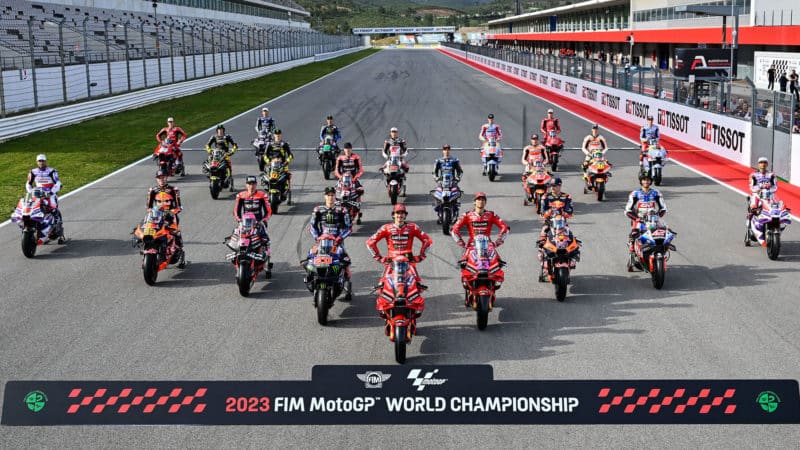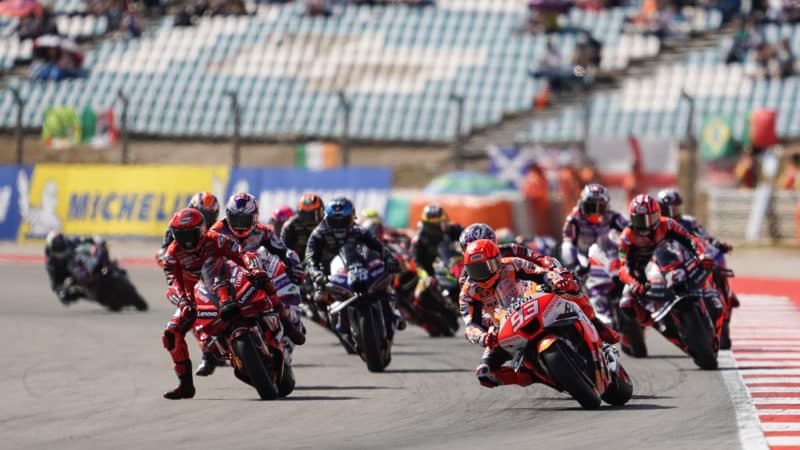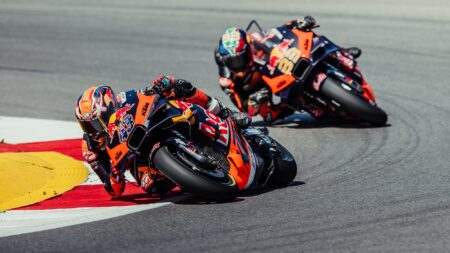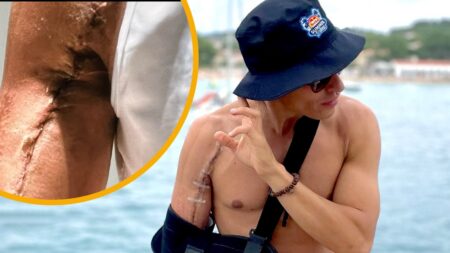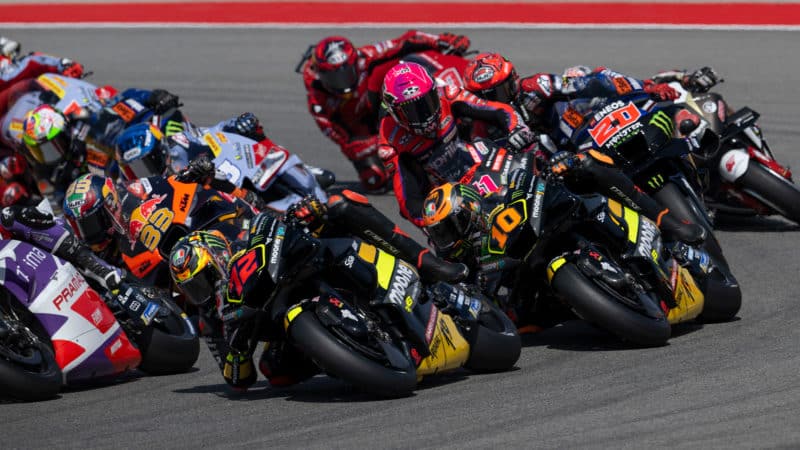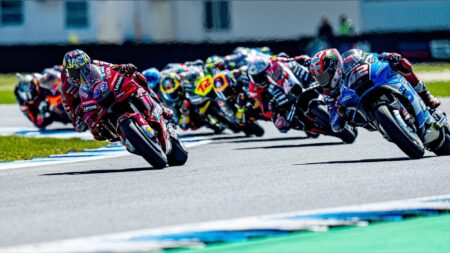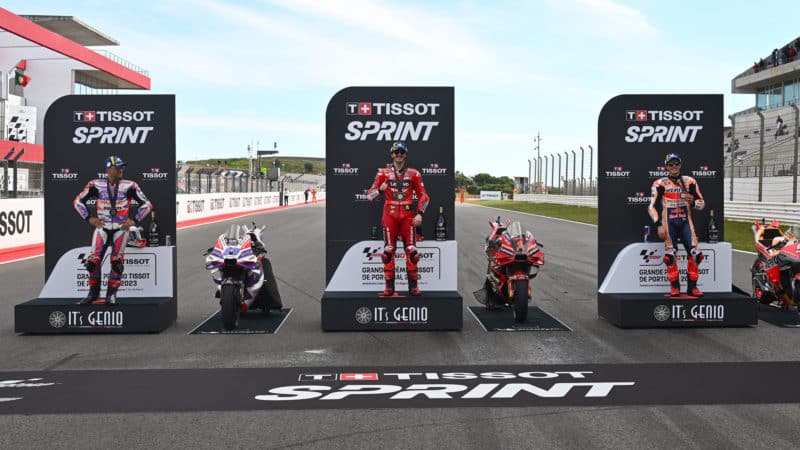FP1 and FP2 at Portimao proved the point. By the end of Friday afternoon the top 20 riders were covered by 1.2 seconds. That was tighter than the top 20 in both Moto2 and Moto3!
Not only are there fewer practice sessions now, the sessions are shorter, at a time when the bikes have never been more complex or tyre choices more critical. Engineers tell me they are now so focused on Q2 from Friday morning that they have no time to try anything but the tiniest tweaks to their motorcycles. And some of them tell me they can barely watch the TV in their garages when their riders are doing time attacks, because they know the huge risks they take at every corner.
“Riders tell you that a qualifying lap is like losing one of their lives,” says one engineer.
FP3 isn’t a pressure point. It’s like the old FP4 session, except it’s largely useless because it takes place in the morning, so the track is cooler than it will be during both the sprint and GP races.
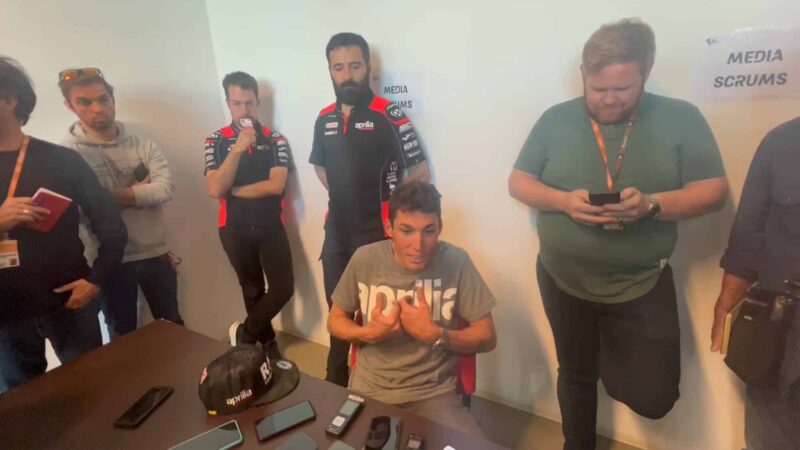
Aprilia’s Aleix Espargaró makes his point after the sprint race
Q1 is a huge stress point for the 12 riders that didn’t go straight to Q2. Once again, they must roll the dice in the hope of ending Q1 fastest or second-fastest, which wins them a chance in Q2, so they can fight for a start on the first four rows of the grid.
And if they don’t make it into Q2 they know their weekend is essentially over.
“If you miss Q2 you get angry,” Danilo Petrucci told me a couple of years ago. “It means you are in trouble, so you cannot say you will fight for the podium.”
“I saw five crashes in front of me, it was crazy”
Q2 is another massive stress point. Overtaking in MotoGP is so difficult now – because all the bikes are essentially the same, with spec tyres, spec software, downforce aerodynamics, ride-height devices and tyre-pressure problems – that you stand little chance of fighting for victory unless you start from the front two rows. At Portimao the front two rows were covered by three-tenths of a second, so you need say your prayers and to let it all hang out. Lord, forgive me for my sins…
“Qualifying is painful,” one crew chief told me recently.
